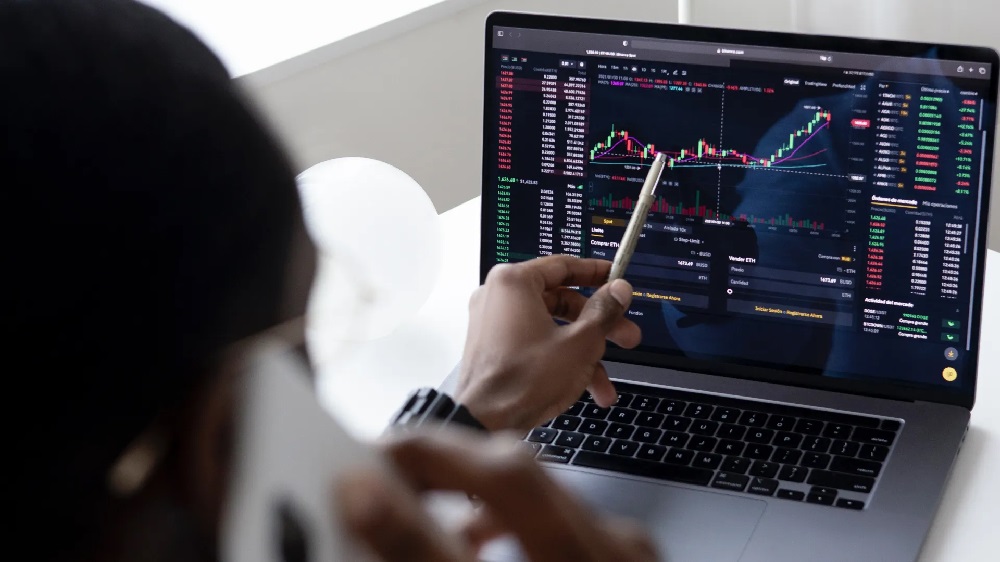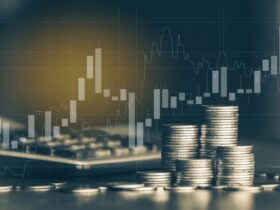Introduction:
Futures trading is a popular investment activity that involves buying and selling futures contracts, which are agreements to buy or sell an underlying asset at a future date and at a predetermined price. Futures trading offers investors the potential for profits through speculation, hedging, and arbitrage. In this blog post, we will explore the world of futures trading, including its features, benefits, risks, and trends.
Futures Trading Features:
- Leverage: Futures trading allows investors to trade on margin, which means that they can control a large amount of the underlying asset with a small amount of capital. This leverage can help investors increase their potential profits, but it also increases their potential losses.
- Liquidity: Futures trading is generally highly liquid, as futures contracts can be bought and sold on a futures exchange. This liquidity can help investors quickly enter and exit their positions, which can help reduce transaction costs and improve investment flexibility.
- Price discovery: Futures trading can help investors discover the true market price of the underlying asset, as the price of the futures contract is determined by the supply and demand of the market.
- Hedging: Futures trading can help investors hedge against price fluctuations in the underlying asset, as they can buy or sell futures contracts to lock in a future price for the asset.
Benefits of Futures Trading:
- Speculation: Futures trading offers investors the potential for profits through speculation, as they can buy or sell futures contracts based on their belief of the future price movement of the underlying asset.
- Hedging: Futures trading allows investors to hedge against price fluctuations in the underlying asset, which can help reduce their investment risk.
- Diversification: Futures trading can help investors achieve diversification, as they can invest in a variety of underlying assets across different sectors and markets.
- Leverage: Futures trading allows investors to trade on margin, which can help increase their potential profits.
Risks of Futures Trading:
- Market risk: Futures trading is subject to market risk, as the value of the futures contract can fluctuate based on market conditions. This market risk can impact the value of the futures contract and the investor’s returns.
- Leverage risk: Futures trading involves trading on margin, which can increase the potential for losses if the market moves against the investor’s position.
- Counterparty risk: Futures trading involves a counterparty, which is the party on the other side of the trade. There is a risk that the counterparty may not fulfill their obligations, which can impact the value of the futures contract and the investor’s returns.
- Liquidity risk: Futures trading is generally highly liquid, but there may be situations where the liquidity of the futures contract may be limited, which can impact the ability of investors to buy and sell the contract.
5.Margin Requirments: Firstly, margin requirements allow traders to take on larger positions with less capital. This means that traders can potentially earn higher returns on their investment with the same amount of capital. Secondly, margin requirements can act as a risk management tool. By requiring traders to hold a certain amount of collateral, margin requirements help to ensure that traders can meet their financial obligations if the market moves against them. This helps to reduce the risk of default and promotes market stability.
Finally, margin requirements can help to prevent market manipulation. When traders are required to hold a certain amount of collateral, they are less likely to engage in risky or manipulative behavior that could negatively impact the market. This helps to promote fair and efficient market pricing.
Futures Trading Strategies:
- Trend following: Trend following involves buying or selling futures contracts based on the trend of the market. This strategy is based on the belief that the market trend will continue in the same direction, and that buying or selling in the same direction as the trend will provide investors with a higher return.
- Spread trading: Spread trading involves buying and selling multiple futures contracts simultaneously, with the belief that the price difference between the contracts will provide investors with a profit.
- Arbitrage: Arbitrage involves buying and selling futures contracts simultaneously on different exchanges or markets, with the belief that the price difference between the contracts will provide investors with a profit.
- Hedging: Hedging involves buying or selling futures contracts to lock in a future price for the underlying asset, which can help reduce the investor’s investment risk.
Futures Trading Trends
- Algorithmic trading: Algorithmic trading is gaining popularity in futures trading, as investors are increasingly using computer programs to analyze market data and execute trades.
- Electronic trading: Electronic trading is gaining popularity in futures trading, as investors are increasingly using online platforms to buy and sell futures contracts. Electronic trading platforms offer investors greater accessibility, lower transaction costs, and greater investment flexibility.
- Energy futures: Energy futures, such as crude oil and natural gas, are gaining popularity as investors are increasingly looking to invest in the energy sector and hedge against energy price fluctuations.
- Commodity futures: Commodity futures, such as gold, silver, and copper, are gaining popularity as investors are increasingly looking to invest in commodities and hedge against commodity price fluctuations.
How do Futures Contracts Work?
Futures contracts have a standardized format, which includes the following details:
- The underlying asset: This can be a commodity, currency, stock, or other financial instrument.
- The delivery date: This is the date on which the underlying asset will be delivered.
- The contract size: This is the quantity of the underlying asset that is being traded.
- The contract price: This is the price at which the underlying asset will be bought or sold.
When a trader buys a futures contract, they are essentially agreeing to buy the underlying asset at the contract price on the delivery date. Similarly, when a trader sells a futures contract, they are agreeing to sell the underlying asset at the contract price on the delivery date.
Futures trading is often used by investors and traders to manage their exposure to price fluctuations in various markets. For example, farmers might use futures contracts to lock in a price for their crops before they are harvested, while investors might use futures contracts to hedge against currency or interest rate fluctuations.
Conclusion:
Futures trading offers investors the potential for profits through speculation, hedging, and arbitrage. Futures trading features include leverage, liquidity, price discovery, and hedging. Futures trading benefits include speculation, hedging, diversification, and leverage. Futures trading risks include market risk, leverage risk, counter-party risk, and liquidity risk. Futures trading strategies include trend following, spread trading, arbitrage, and hedging. Futures trading is evolving, with trends such as the growth of algorithmic trading, electronic trading, energy futures, and commodity futures. As with any investment decision, it is important for investors to do their research and consult with a licensed financial advisor before making any investment decisions in the futures trading market. By understanding the features, benefits, risks, and trends of futures trading, investors can make informed investment decisions that align with their investment goals and risk tolerance. It is definitely recommended to read more about futures trading before investing.










